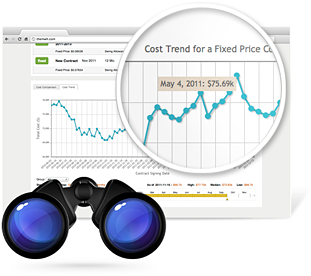Every year we do a review of electricity cost data for our portfolio of clients. MWh’s mid-year review of electricity cost data taught us at least 3 interesting lessons. Read on to learn more about the insights that a detailed review of electricity costs can deliver.
Approach to Reviewing Electricity Cost Data
MWh’s approach to a complete review of data included the following:
- First, we compare electricity delivery costs to supply costs.
- Then we analyze seasonal differences in costs.
- Then, we look at the detailed components of electricity costs for clients.
- Details include: supply details (power costs, capacity costs, detailed charges) and delivery details (demand charges, ratchets, seasonal shifts, and so on).

Electricity Cost Data: 3 Lessons Learned
Here are the 3 lessons learned from MWh’s mid-year deep dive on electricity costs:
- Newsflash: Markets respond to uncertainty. In April, the NY Independent System Operator signaled an interest in pricing carbon into energy purchases. The ISO released a straw proposal for incorporating the cost of carbon emissions into the wholesale electricity market. Utility Dive, along with other players, reported on the plan. The forward market prices increased as a result of these plans. Forward prices for 2020/2021 increased 26% on this news. Prices subsequently settled back down after the NYISO revised the timeline for implementation.

Getting insight into forward prices helps you plan for future budget cycles. - It still pays to plan for Winter extremes. Electricity supply costs were highest for customers exposed to index markets this Winter. Weather drove high day-ahead and real-time rates in January, which resulted in some sticker shock among customers who did not fix some or all of their electricity costs.
- There’s no such thing as “normal” weather. We knew this already, but it hit home this Spring. As we reported in the Spring, the “shoulder” months of March, April and May were colder than usual (as measured in Heating Degree Days). These weather patterns primarily impacted natural gas usage. Nevertheless, it is an important lesson as we head into the Fall shoulder periods. A few of the Northeast’s peak load periods have occurred during September and even into October thanks to extended warm weather.
Bottom line for energy managers and finance professionals: Good planning requires insight and analytics. Make sure you have the ability to learn from recent weather, regulatory, and pricing events so that you can plan for future budget cycles. The more pro-active you can be, the more capable you will be managing energy costs.
